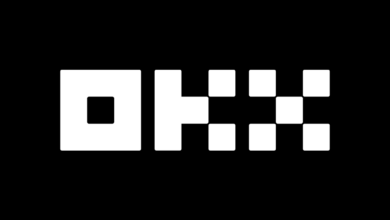OKX CeDeFi: A Unified Market Infrastructure for the Next Generation of Trading

OKX, a trusted global crypto exchange and global on-chain technology provider, has introduced a new model for how users interact with on-chain markets through OKX CeDeFi, a hybrid trading infrastructure that brings decentralized liquidity directly into the OKX app. The feature reduces friction, simplifies access to early token ecosystems, and merges CEX and DEX environments into a single user experience. As global markets evolve and the UAE continues to position itself as a digital asset hub, OKX CeDeFi signals a shift toward unified, interoperable market architecture.
Star Xu, Founder of OKX, frames the launch as a continuation of the company’s mission to simplify global market access. “OKX was built to make global markets accessible through reliable and transparent technology. CeDeFi trading extends that mission — combining the efficiency of centralized infrastructure with the openness of decentralized networks.”
OKX CeDeFi: Expanding Market Access Across Chains
OKX CeDeFi brings decentralized trading into the same environment used for centralized orderbooks, allowing users to move across Solana, Base and X Layer without switching apps or wallets. According to Xu, Starting today, CeDeFi trading is available in the OKX App, including in the United States and key regions worldwide. It connects users directly to decentralized markets on Solana, Base, and X Layer — without leaving the OKX ecosystem.”
This matters because the majority of early token activity starts on-chain. By embedding DEX access directly inside the OKX interface, OKX CeDeFi reduces the distance between users and emerging liquidity.
Removing Friction Through Self-Custody and One-Step Activation
For most retail and institutional users, the complexity of DeFi remains a barrier. Multiple wallets, seed phrases, network switching and bridging all represent operational and security risks. Xu explains the problem clearly: “For most users, accessing DEX markets requires multiple wallets, network switches, seed phrase management, and token bridging for gas fees. Each of these steps introduces friction, delay, and risk.”
OKX CeDeFi removes these steps entirely.
“With CeDeFi, users can activate DEX trading in one step. A self-custody wallet is created automatically and secured with a passkey, eliminating the need for a seed phrase. Users retain full control of their keys and assets, while connecting directly to on-chain liquidity.”
This passkey-based self-custody approach aligns with global regulatory expectations, including those in the UAE, where control of private keys and clear asset segregation are core policy considerations.
Trading With a Unified Balance Through OKX CeDeFi
One of the most significant features of OKX CeDeFi is the ability to trade on decentralized markets using the same balance a user already holds on the centralized exchange. This eliminates transfers, bridging, and the need to pre-fund gas on multiple networks.
Xu highlights this breakthrough: “Crucially, users can use their existing OKX exchange or portfolio balance to access DEX markets. This integration removes the need to move funds manually or bridge between networks — the app manages settlement seamlessly between centralized and decentralized environments.”
This creates a unified liquidity experience that appeals to both advanced traders and newcomers looking for safe entry points into DeFi.
Unified Interface, Smart Routing, and Transparent On-Chain Execution
OKX CeDeFi is designed as a single visual and functional interface that blends CEX performance with DEX transparency. Xu describes it as follows: “CeDeFi merges CEX and DEX functionality into a single, consistent interface. Users can switch between centralized orderbooks and decentralized liquidity from the same portfolio view.”
A smart routing engine scans more than 100 liquidity pools to secure optimal execution. According to Xu: “Our smart order routing system searches across 100+ liquidity pools in real time to identify the most efficient execution path. This provides CEX-level speed and reliability with DEX-level transparency and reach.”
Every on-chain transaction remains verifiable and auditable, reinforcing trust and user control at a time when transparency has become a key differentiator for global exchanges.
Early Token Access Through OKX CeDeFi
Many of the most active projects today launch directly on decentralized networks long before reaching centralized orderbooks. OKX CeDeFi gives users access to these early opportunities while maintaining the familiar OKX account structure.
“Many new projects begin on decentralized networks before reaching centralized listings. Through CeDeFi, OKX users gain direct access to these early markets on Solana and Base using the same account infrastructure that powers their centralized trading. Every on-chain transaction remains verifiable, auditable, and fully under the user’s control.”
This could prove particularly relevant in markets like the UAE, where regulated access to early-stage opportunities is becoming increasingly important for both retail and institutional participants.
The Design Principles Powering OKX CeDeFi
Under the hood, OKX CeDeFi is built around a set of engineering priorities designed to unify the trading experience:
- Unified access – CEX and DEX trading from one balance and interface.
- Self-custody – Wallets are owned and controlled by the user.
- Security through simplicity – Passkey authentication replaces seed phrases.
- Transparent execution – All on-chain actions are verifiable.
- Interoperability – Support for Solana, Base, and (X Layer in select markets at launch).
Xu describes this model as the evolution of digital markets: “CeDeFi represents an evolution in how digital markets operate: a modular system where centralized performance and decentralized access coexist. By connecting user balances, unified interfaces, and self-custody, we’re moving closer to a fully interoperable financial architecture — one where technology, not intermediaries, defines access.”
What Does OKX CeDeFi Mean for the Future of Digital Finance?
The introduction of OKX CeDeFi marks a turning point in how exchanges approach DeFi accessibility, liquidity, and user control. For markets like the UAE, where regulation continues to encourage innovation while prioritizing safety, this hybrid model offers a framework for future financial infrastructure.
As more liquidity, assets, and early projects emerge on decentralized networks, will unified CeDeFi architectures become the standard for how users and institutions trade across both centralized and decentralized markets?
What shifts in user behavior, regulation, and market structure will this new hybrid model ultimately create?





